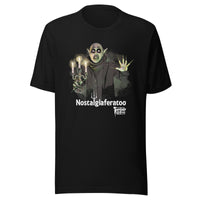7 things you never knew about the hula hoop
This was the original fidget spinner.

Image: AP Photo
If you've been in a gas station checkout or a middle school classroom recently, you're probably familiar with the fidget spinner. It's a simple plastic toy that spins. Those kind of cheap, plastic, "why didn't I think of that" toys tend to be the ones that go viral. Every generation of the modern age had one — from Klackers to Wacky WallWalkers. Of course, it all began with the hula hoop, the original mindless, plastic, spinning thingamajig.
No one saw it coming. It was, after all, just a simple plastic tube curved into a hoop. In the summer of 1958, the hula hoop boom began. At some point in their childhood — or adulthood — every American, from Boomer to beyond, has swiveled their hips inside a hula hoop.
As another summer arrives, undoubtedly countless hula hoops will continue to twirl on beaches and in backyards. That being said, the hula hoop almost disappeared as quickly as it blew up. Let's take a look at this simple-but-brilliant invention. Here are seven things you might not know about the hula hoop.
1. They flew off the shelves.

Withing four months of its introduction, 25 million hula hoops had been sold.
Image: The Everett Collection
2. It's related to another famous plastic toy.

The hoop was the brainstorm of Richard Knerr and Arthur Melin, co-founders of Wham-O, the same men who had previously scored a big hit with another invention — the Frisbee.
Image: AP Photo/Riethausen
3. The inventors failed to secure a patent.

Knerr and Melin were so unprepared for the hula hoop's success, they neglected to patent it, which allowed competing hoops to rise up, including one from TV personality Art Linkletter.
Image: The Everett Collection
4. The fad nearly died out forever.

By 1960, sales inevitably tapered off. Just as Knerr and Melin had not anticipated the craze, they hadn't foreseen its end, leaving them marooned with a huge stock of unsold inventory.
Image: AP Photo / Mitsunori Chigita
5. The inventors barely made any money off the initial craze.

After selling almost 10 million hula hoops, Knerr and Melin's total profit was just $10,000.
Image: AP Photo / John F. Urwiller
6. A simple tweak led to a comeback.

Nevertheless, the two still believed in the inherent appeal of their invention, and after finally securing a patent in 1963, Knee and Melin unleashed the noise-making "Shoop-Shoop Hula Hoop."
Image: The Everett Collection
7. The Shoop Shoop Hula Hoop was nutty. Literally.

Originally, Wham-O experimented with walnut shells inside the hoops to make sound. The shells were later replaced by ball bearings, which did the trick. The Shoop Shoop Hula Hoop became a steady seller, a toy store evergreen, and every now and again became a minor fad again.
Image: The Everett Collection








0 Comments







































